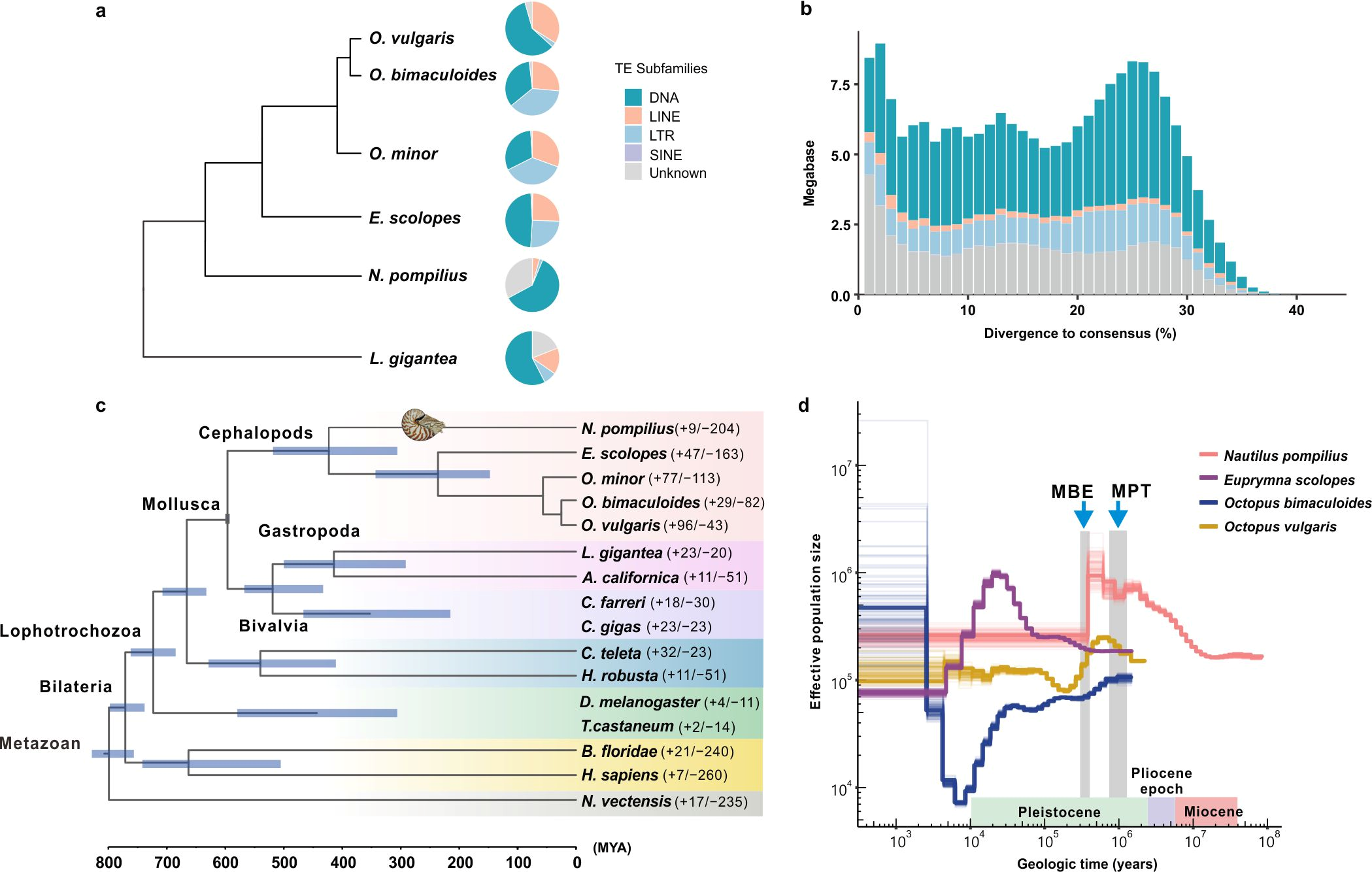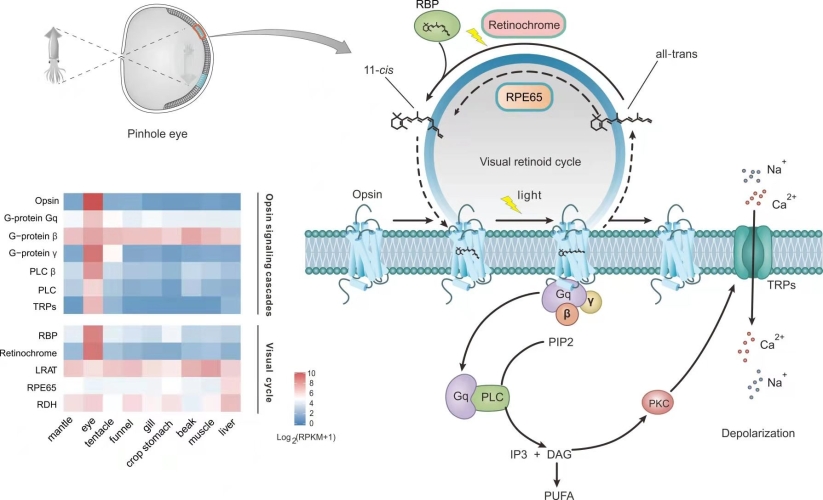Recently, the researcher group led by Prof. YU Ziniu from the South China Sea Institute of Oceanology (SCSIO) of the Chinese Academy of Sciences sequenced the first complete Natuilus genome and unveiled the evolutionary features underlying the pinhole eye formation and biomineralization.
This study was published in Nature Ecology & Evolution on May 10.
Nautilus is the only surviving externally shelled cephalopod since the Palaeozoic. They have preserved many ancestral features despite a long evolutionary history, such as a chambered shell and pinhole eye.
The researchers sequenced the complete genome of N. pompilius, which is the most widespread species among nautiluses. The genome was 730.58 (Mb) in size and encoded 17,170 protein-coding genes, presenting a most compact, simple and slow-evolving genome when compared to other coleoid cephalopods.
Nautilus possesses a unique pinhole eye without lens, providing an excellent prototypical model for illuminating the evolution of the eye. Comparative genomics showed that a lineage-specific loss of the Nrl/Maf gene and contraction of crystalline gene family co-facilitated the evolution of the nautilus pinhole eye.
Meanwhile, Nautilus only preserves a most simplified the photo-transduction cascades and monotonic opsin, indicating the inability on color discrimination in N. pompilius. "In addition, it has a dual system retinal isomerization system to drive visual cycle, which may be associated with increase of opsin sensitivity to capture the dramatic decline of luminance in deep-sea waters," said Prof. YU.
Shell internalization is one of the crucial revolutionary events in the development of cephalopods body, while Nautilius is the only cephalopod with an exoskeleton.
Scanning-electron microscopy images of N. pompilius inner layers demonstrated its mainly composition of aragonite crystals, suggesting that aragonite might be ancient crystalline calcium carbonate for constructing the molluscan shell.
Identification of N. pompilius shell matrix proteins support the hypothesis of the conserved molluscan biomineralization "toolkit". Particularly, the novel repetitive low-complexity domains may be associated with uniqueness and novelty of nautilus shell structure, and parallel evolution of repetitive low-complexity domains may be a unifying principle for molluscan biomineralizaiton.
The study was supported by National Key R&D Program of China, the Key Special Project for Introduced Talents Team of Southern Marine Science and Engineering Guangdong Laboratory (Guangzhou) and the National Natural Science Foundation of China.
Contact:YU Ziniu,carlzyu@scsio.ac.cn
ZHANG Yang, yzhang@scsio.ac.cn

Figure legends: a, Proportions of DNA transposons, LTR, LINE and SINE retrotransposons in the genomes of five representative cephalopods.
b, History of TE accumulation in the N. pompilius genome. c, A phylogenetic tree from 16 metazoan animals using OrthoMCL. d, Demographic history of cephalopods.
Fig. 1 Genomic structure of the N. pompilius genome and cephalopod phylogeny.(Image by SCSIO)

Fig. 2 Visual model of N. pompilius.(Image by SCSIO)
